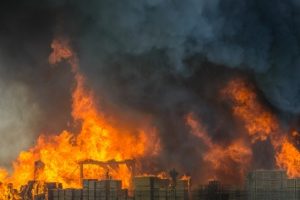On the night of July 3, 2017, workers at the Multifabs Limited garment factory just outside Dhaka, Bangladesh were preparing to put the facility back into production. The factory, which supplies knitted apparel to firms in seven different European countries, had been shut down for the 10-day Eid holiday at the end of the Muslim holy month of Ramadan. Before it could reopen, something went wrong: a boiler exploded, causing the six-story building to collapse. Ten people were killed, dozens more injured—some were workers, others were pedestrians walking along the street outside the building.
The explosion highlighted ongoing concerns about worker safety in Bangladesh and other nations that produce goods for export to Western companies—concerns that Western firms might have believed they were getting under control.
An Ongoing Problem
In April 2013, another multistory garment factory just outside Dhaka collapsed, a victim of poor construction practices and overloaded floors. The collapse claimed 1,127 lives and injured more than 2,000. In its wake, many Western clothing retailers were pressured into signing the Accord on Fire and Building Safety in Bangladesh (the Accord)—a legally-binding 5-year agreement between companies and trade unions that was intended to improve safety in Bangladesh’s ready-made garment (RMG) industry, which employs 4 million people.
The Multifabs explosion came just days after the Accord announced that many companies would renew their participation in the Accord, which expires in May 2018. The original Accord attempted to strengthen safety in the RMG industry by requiring:
- An independent inspection program supported by participating brands and trade unions;
- Public disclosure of all participating factories, inspection reports, and corrective action plans (CAPs);
- A commitment by participating brands to provide sufficient funds for remediation and to maintain sourcing relationships;
- Elected health and safety committees in all factories to identify and act on health and safety risks; and
- Extensive worker training programs, a complaints mechanism, and protection of workers’ right to refuse unsafe work.
Unfortunately, the effectiveness of the program’s implementation has been subject to criticism. As of April 2017, only 100 of the 1655 factories participating in the Accord were “on track” or had completed their CAPs; 1,360 factories were “behind schedule,” 132 had not yet finalized a CAP, and 63 had altogether failed to implement one. Although some of those factories may have been new to the Accord, it is evident that much remains to be done.
Health and Safety and Your Brand
When most businesses think of supply chain risk, they think of the risk that products or components will not be delivered on time, or that they will be poor quality. Certainly those types of incidents have damaged the reputations of many international brands, from Hershey’s to Sony. However, those are not the only risks inherent in your supply chain. As the deadly disasters in Bangladesh have shown, labor issues like safety can also damage a reputation’s brand.
After the Rana Plaza collapse, an Associated Press photographer captured a photograph of Italian clothing retailer Benetton’s logo in the rubble. It’s time to think about the steps your company can take to ensure that the next time a major workplace disaster abroad makes the news, it’s not your company’s logo that shows up in the photographs.

